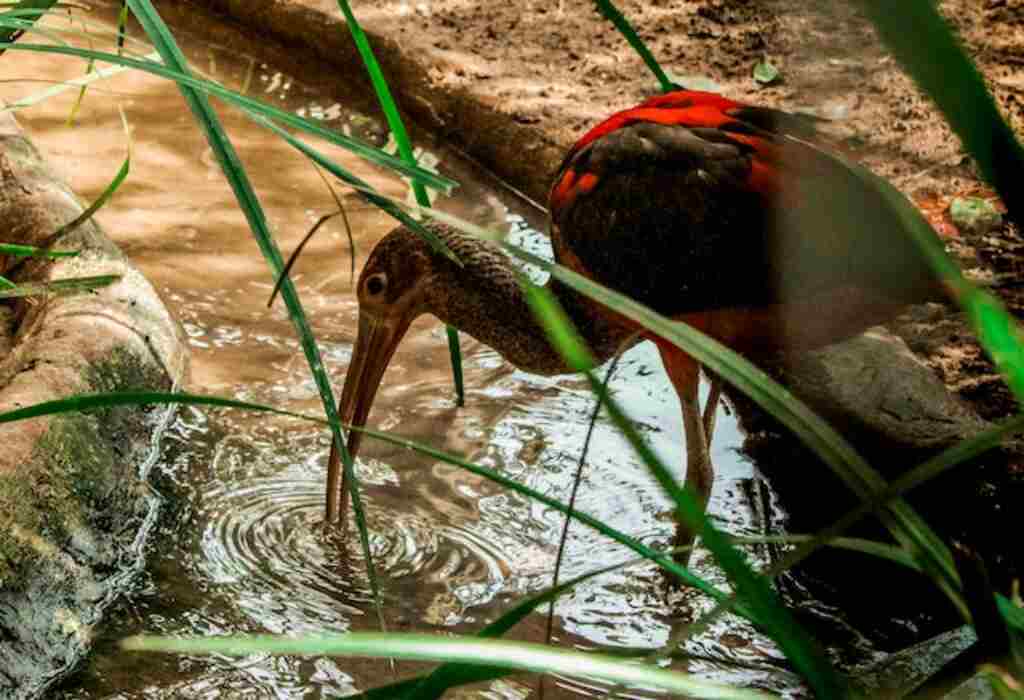How Do Birds Keep Cool In Hot Weather? Well, imagine you’re a bird in summer – feathers fluffed, wings drooping, and sweat glands… oh wait, birds don’t sweat! While they might not be lounging by the pool with a piña colada, our feathered friends have some nifty tricks up their wings to beat the heat.
From built-in air conditioning systems to strategic siestas, this article unveils the avian secrets to staying chill when the sun turns up the heat. So, if you’re curious about the science behind those carefree bird songs, keep reading – it’s time to unlock the coolness!
Table of Contents [show]
Key Takeaways
- Birds use a range of thermoregulation mechanisms to regulate their body temperature.
- Physical adaptations, such as specialized feathers, help birds cope with hot weather.
- Birds modify their behavior, feeding, and migration patterns in response to hot weather.
- Specific cooling strategies, such as perching in the shade and bathing, aid in heat dissipation.
- Birds use panting and evaporative cooling to lower their body temperature.
- Feathers provide insulation, helping birds maintain optimal body temperature.
- Birds also use additional cooling mechanisms, such as raising feathers and gular fluttering.
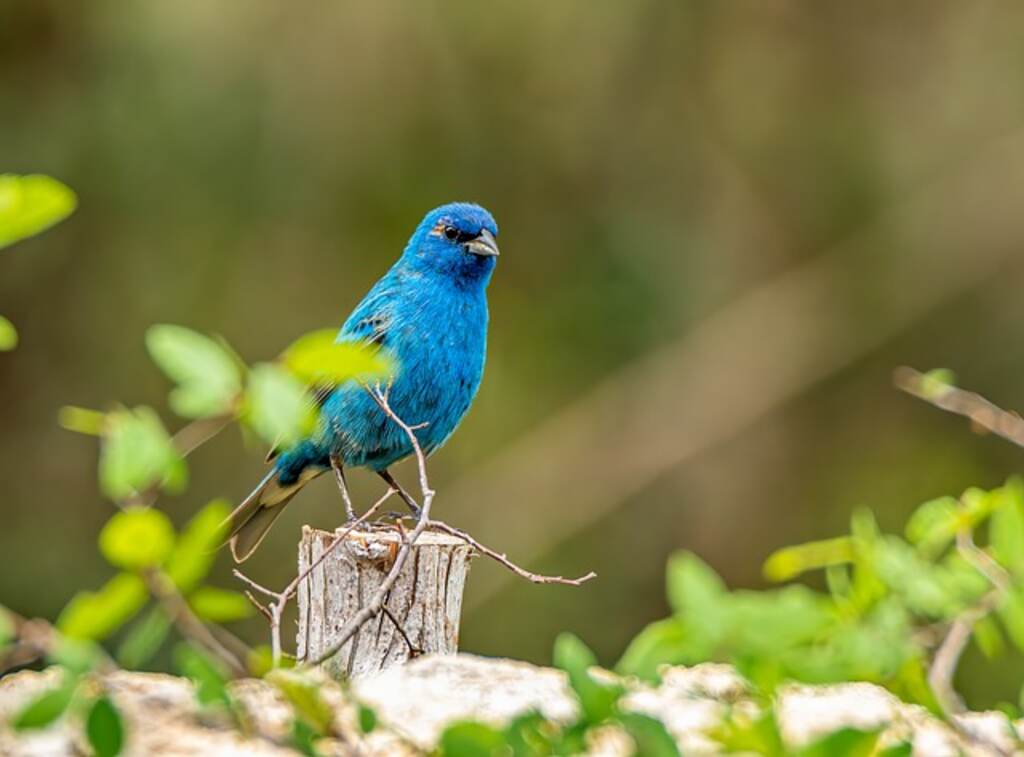
How Do Birds Keep Cool In Hot Weather?
Birds have a variety of unique adaptations that help them beat the heat in hot weather. Unlike humans, birds don’t sweat or pant to cool down. Instead, they have a specialized respiratory system that allows them to exchange heat and moisture with each breath.
Birds also have a high metabolic rate, which means they generate a lot of body heat. To counteract this, they may seek out shade, take frequent baths, or spread their wings to release heat.
Some birds, such as desert birds, have additional adaptations, such as small body size and the ability to concentrate urine, that help them conserve water in hot, dry environments.
Thermoregulation in Birds
Birds are endothermic animals, meaning that they are capable of regulating their own body temperature. The ideal body temperature for most birds is around 104°F (40°C), and any variation from this range can be harmful to their health. Therefore, they have evolved various thermoregulation mechanisms to cope with heat stress in hot weather.
Heat Stress in Birds
Exposure to high temperatures can lead to heat stress in birds, which can cause various physiological and behavioral changes. These changes include increased respiration rate and heart rate, reduced physical activity, and avoidance of direct sunlight. If left unmanaged, heat stress can be extremely detrimental to a bird’s health, leading to dehydration, heat exhaustion, and in some cases, mortality.
Thermoregulation Mechanisms
Birds have various mechanisms to regulate their body temperature and avoid heat stress. One of the primary ways they do this is by altering their metabolic rate. When it’s hot, birds slow down their metabolic rate to produce less heat energy and reduce their body temperature.
Another important mechanism is evaporative cooling. Birds have a specialized respiratory system that enables them to lose heat through panting. As they exhale, air moves over moist surfaces in the mouth and throat, causing water to evaporate and dissipate heat. Birds also use evaporative cooling when they bath or wet their feathers with water.
Birds also employ anatomical adaptations to cope with heat stress. For example, some birds have specialized feathers that help them maintain optimal body temperature. Densely packed feathers insulate their bodies, while specialized feathers like “powder down” produce a fine, powdery substance that helps them retain moisture.
Birds can also change their behavior to avoid heat stress. They may seek out shade, reduce their physical activity, and avoid flying during the hottest parts of the day. Some species of birds will also modify their nesting and feeding patterns in response to high temperatures.
Overall, birds have evolved an impressive set of mechanisms to stay cool in hot weather. Through metabolic, behavioral, and anatomical adaptations, they are able to regulate their body temperature and avoid the harmful effects of heat stress.
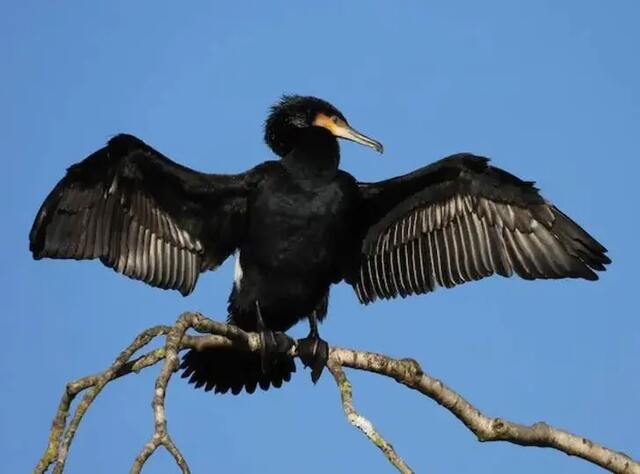
Bird Adaptations to Hot Climate
Birds have evolved a number of physical adaptations to help them cope with hot weather. These adaptations allow birds to regulate their body temperature and maintain optimal physiological functioning, which is essential for their survival.
One such adaptation is the specialized feather structure of birds that live in hot climates. These feathers are often thinner and more spaced out than those of birds that live in colder climates. This feather structure allows for increased heat dissipation and air circulation close to the skin. Additionally, some species of birds have developed specialized plumages that reflect sunlight, reducing the amount of heat absorption.
Birds also have unique beak and leg structures that aid in thermoregulation. Certain bird species, such as the long-billed curlew, have long, thin beaks that allow for easier and more efficient heat dissipation. Similarly, some birds possess long, thin legs that allow them to stay elevated off the ground, reducing exposure to hot surfaces.
Another adaptation is the presence of air sacs within the bird’s body, which act as a cooling mechanism. These air sacs help regulate the bird’s internal temperature by allowing them to inhale and exhale air in a cyclical fashion, which increases heat dissipation.
Finally, some birds have also developed the ability to reduce their body temperatures through panting and evaporative cooling. Interestingly, some bird species have been observed to use their wings to fan air over their skin, increasing the rate of evaporative cooling.
Bird Behavior in Hot Weather
In addition to their physical adaptations, birds also display changes in their behavior to cope with hot weather. These modifications are often related to feeding, nesting, and migration patterns.
One way birds cope with the heat is by adjusting their feeding habits. They may feed during the cooler parts of the day and reduce their activity during the hottest parts. Some species may switch to a diet with higher water content or seek out sources of moisture, such as berries or fruit.
Birds also modify their nesting habits in hot weather. They may choose to nest in cooler, shaded areas or build nests with insulating materials to protect their young from heat stress. Some species may delay their nesting until the temperature cools down.
In terms of migration, birds may alter their routes, timing, and distance to avoid areas with extreme heat. They may also stop at water sources along their journey to rest and rehydrate.
It is important to note that not all species exhibit the same changes in behavior. Some birds may have unique adaptations that allow them to thrive in hot environments without altering their behavior significantly.
Bird Cooling Strategies
Birds use various strategies to keep themselves cool in hot weather. Here are some of the main cooling strategies adopted by birds:
| Strategy | Description |
|---|---|
| Perching in shade | Birds perch in shaded areas to reduce their exposure to direct sunlight and lower their body temperature. |
| Bathing | Birds take baths frequently to cool down by wetting their feathers. Some birds even dip their entire bodies in water to regulate their body temperature. |
| Spreading wings | Birds spread their wings out to increase heat dissipation and promote air circulation around their bodies. |
In addition to these strategies, birds also pant and use evaporative cooling, which can be read in sections Bird Panting and Evaporative Cooling in Birds, respectively. They also have specialized feathers and other physical adaptations to help regulate their body temperature, which will be discussed in the following sections.

Bird Panting
Bird panting is a common sight in hot weather. It is a respiratory cooling mechanism that helps birds dissipate excess heat. Unlike mammals, who sweat to regulate their body temperature, birds do not have sweat glands. Instead, they pant to cool their bodies down.
Panting involves the rapid movement of air in and out of the respiratory system. As the hot air is expelled from the bird’s body, it takes away some of the heat, effectively cooling the bird down.
Panting can be easily observed in birds, as it involves the rapid movement of their beaks and bodies. Some birds pant with their mouths open, while others pant with their bills partially closed.
The frequency and intensity of panting can vary among different species. For example, larger birds may pant more slowly and less frequently than smaller birds.
Birds also have specialized respiratory systems that aid in cooling. For example, some species have air sacs in their bodies that help regulate body temperature.
These air sacs can store and transport hot air away from the body, reducing the amount of heat that needs to be expelled through panting.
Overall, panting is an important cooling mechanism for birds in hot weather. It allows them to regulate their body temperature and avoid heat stress.
However, excessive panting can also be a sign of heat stress or other health issues, so it is important to monitor birds carefully in hot weather.
Bird Evaporative Cooling: How It Works
Birds use evaporative cooling to regulate their body temperature in hot weather. This process involves the evaporation of water from the respiratory system and specialized body parts of the bird.
When the temperature rises, birds can increase their breathing rate, which increases the amount of moisture in the air sacs of the respiratory system. As they exhale, the moisture evaporates, carrying the heat away from their bodies.
Additionally, some bird species have specialized body parts that aid in evaporative cooling. For example, the naked skin around the eyes and beak, known as the gular region, can become flushed with blood to increase heat loss through evaporation.
Evaporative cooling is a highly effective way for birds to regulate their body temperature, particularly in dry climates. However, it also has its limits, as birds can dehydrate quickly if they lose too much moisture through evaporation.
Bird Feather Insulation
Birds have developed a unique way to insulate themselves from the heat using their feathers. The complex structure and arrangement of feathers play a crucial role in maintaining optimal body temperature.
The feathers on birds’ bodies are densely packed and overlap each other, creating a barrier against external heat. The layer of feathers closest to the skin is called the down layer, and it is the most effective insulator. The down feathers are short, fluffy, and trap tiny pockets of air, which act as an insulating layer.
Birds also have specialized feathers called “filoplumes” that are located near the base of the contour feathers. These feathers are small and hair-like and help birds adjust the position of their feathers to maintain maximum insulation.
Additionally, birds will fluff up their feathers in hot weather to allow air to circulate between the feathers, which helps to dissipate heat. Birds can also adjust their feathers to control their body temperature by raising or lowering them to retain or release heat, respectively.
Overall, the insulation provided by bird feathers is a vital component of their ability to regulate their body temperature and cope with hot climates.
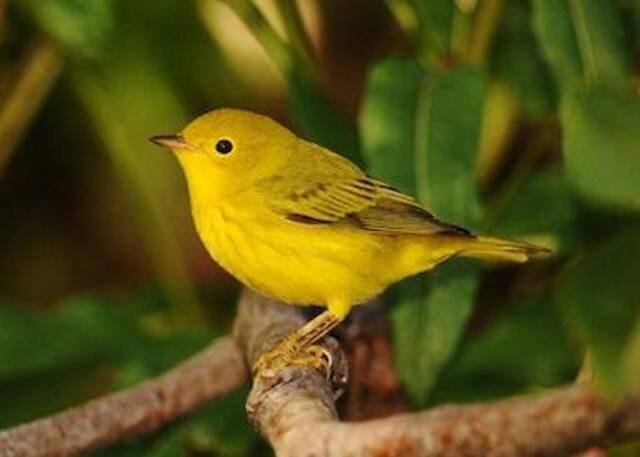
Bird Cooling Strategies
Birds have evolved a range of strategies to maintain their body temperature during hot weather. Some of these cooling mechanisms include:
- Perching in the shade: Birds often seek out shaded areas, such as under leaves or branches, to escape the direct heat of the sun.
- Bathing: Birds will cool down by splashing water on their feathers and skin. They may do this in birdbaths, lakes, or puddles.
- Spreading wings: Birds will sometimes stretch out their wings to expose more surface area to the air, which helps heat dissipate.
In addition to these strategies, birds also have unique physiological adaptations that allow them to stay cool in hot weather.
Bird Cooling Strategies
Birds have developed a variety of strategies to help them stay cool in hot weather.
Perching in Shade
One effective method that birds use to cool down is perching in shade. By finding a shady spot and resting, birds can avoid the direct heat of the sun, which can raise their body temperature to dangerous levels.
Bathing
Another cooling strategy that birds use is bathing. By splashing around in water, birds can lower their body temperature and hydrate at the same time. Some species will even bathe several times a day during hot weather.
Spreading Wings
When birds feel overheated, they will often spread their wings out to increase heat dissipation. This technique allows air to flow over their bodies and helps evaporate any moisture on their skin or feathers.
Panting
Birds also pant to release heat from their bodies. By rapidly breathing in and out, birds can transfer heat from their bodies into the environment. This technique is particularly effective for birds that have a high metabolic rate, such as hummingbirds.
Evaporative Cooling
Birds use evaporative cooling to regulate their body temperature. When birds pant, they release water vapor from their respiratory system, which cools the blood vessels in their head. Additionally, some species have specialized body parts, such as bare skin patches on their legs or around their eyes, that allow for greater heat loss through evaporative cooling.
Other Cooling Mechanisms
Besides the strategies mentioned above, birds also use other cooling mechanisms such as raising their feathers to allow for greater air circulation, gular fluttering (rapid movement of the throat muscles to increase evaporative cooling), and adjusting their posture to expose their less insulated body parts to the air.
Overall, birds have evolved an impressive array of adaptations and strategies to cope with hot weather. These mechanisms are crucial for their survival and allow them to thrive even in the face of extreme temperatures.
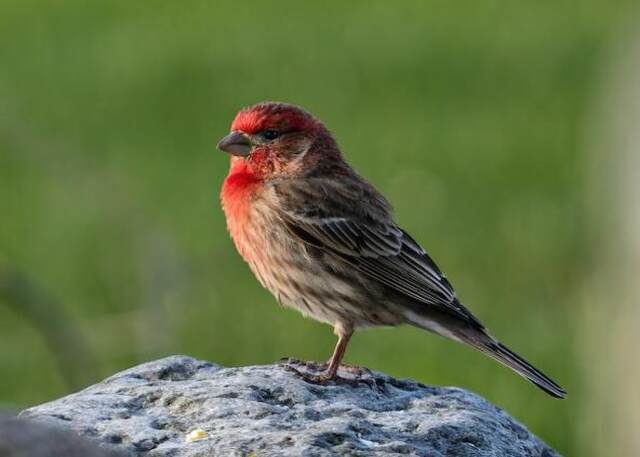
FAQs: How Do Birds Keep Cool In Hot Weather?
How do birds keep cool in hot weather?
Birds have various mechanisms for keeping cool in hot weather. These include thermoregulation, adaptations to hot climates, behavioral changes, and specific cooling strategies.
What is thermoregulation in birds?
Thermoregulation is the process by which birds regulate their body temperature. They have physiological and behavioral mechanisms to maintain optimal temperatures, especially in hot weather.
What are some bird adaptations to hot climates?
Birds have developed physical adaptations to thrive in hot climates. These include specialized feathers, beaks, and legs that help them cope with heat and regulate their body temperature.
How do birds change their behavior in hot weather?
In hot weather, birds modify their feeding, nesting, and migration patterns to adapt to the heat. They may seek shade, reduce activity, and conserve energy to prevent overheating.
What are some bird cooling strategies?
Birds employ various cooling strategies to lower their body temperature. These include perching in shade, bathing, and spreading their wings to increase heat dissipation.
What is bird panting?
Bird panting is a behavior displayed by birds as a way to cool down in hot weather. It involves rapid, shallow breathing that helps them dissipate excess heat.
How do birds use evaporative cooling?
Birds use evaporative cooling to regulate their body temperature. Their respiratory system and specialized body parts help in the process of evaporating moisture to cool down.
How do bird feathers provide insulation against hot weather?
Bird feathers play a crucial role in providing insulation against hot weather. The structure and arrangement of feathers help birds maintain optimal body temperature by trapping air and reducing heat absorption.
What are some other cooling mechanisms employed by birds?
Besides the mentioned cooling strategies, birds also raise their feathers, engage in gular fluttering, and adjust their posture to aid in heat dissipation and cooling.
How do birds keep cool in hot weather?
Birds have developed various mechanisms and adaptations to keep cool in hot weather. These include thermoregulation, physical adaptations, behavioral changes, and specific cooling strategies.

